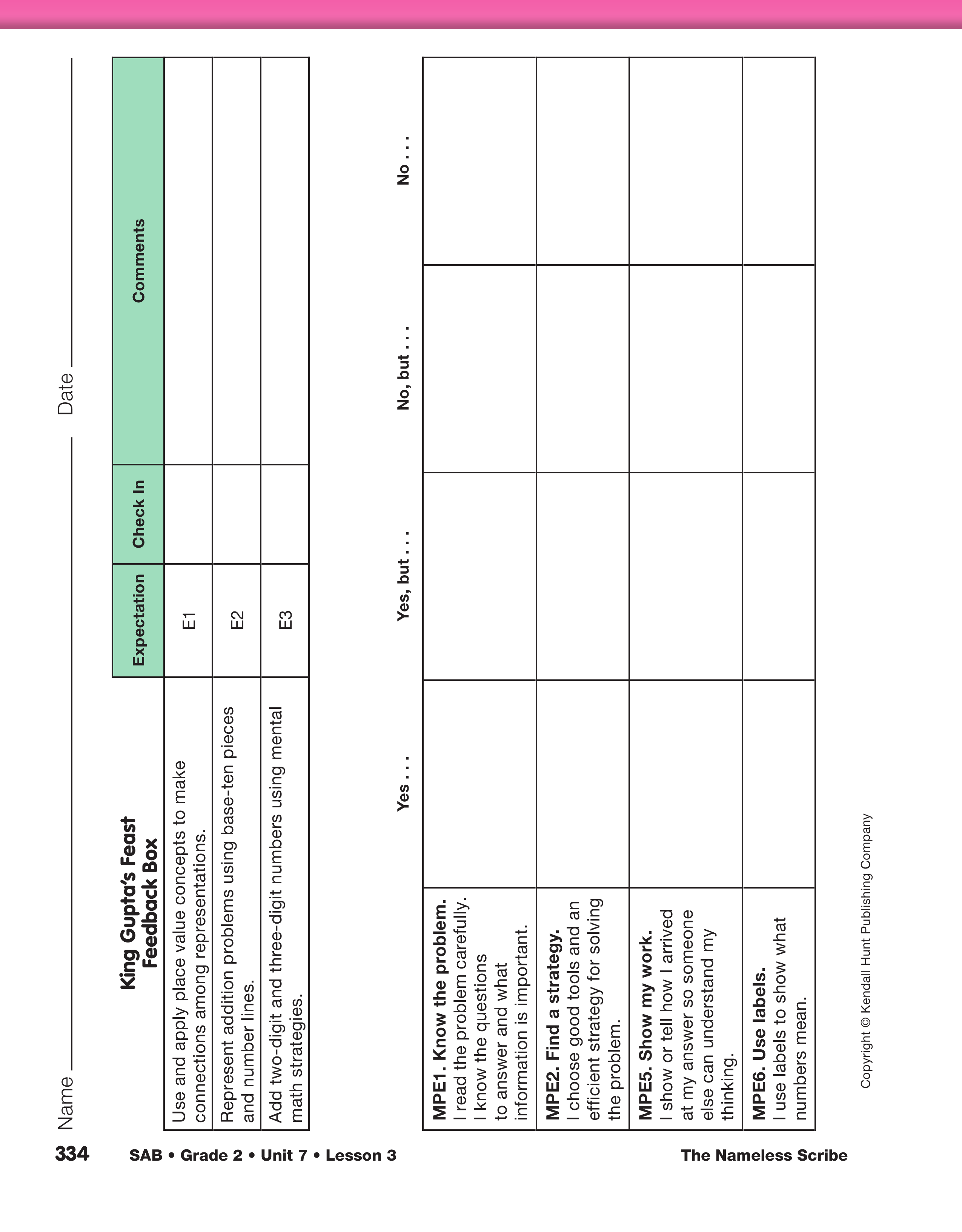Tell students that they are going to solve a few more
problems on the King Gupta’s Feast page in the
Student Activity Book. Before they begin, display
and direct students’ attention to the Math Practices
page in the Student Activity Book Reference section.
Focus on Math Practices 1, 2, 5, and 6.
- How can you make sure you know what information
is important in a problem [MPE1]? (Read the
problem carefully; think about what the question
is asking; decide which numbers and words are
important.)
- What are some of the tools and strategies you can
use to solve addition problems [MPE2]? (base-ten
pieces, base-ten shorthand, number lines, 200
Chart, invented strategies, mental math strategies)
- Krishna always included labels with his numbers
such as bananas, saddles, and candies. For
Question 3, what label do you need to include in
your answer to show what your numbers mean
[MPE6]? (children)
Use the King Gupta’s Feast page and the Feedback Box in the
Student Activity Book to assess students’ abilities to use and
apply place value concepts [E1]; represent addition problems
using base-ten pieces and number lines [E2]; add multidigit
numbers using mental math strategies [E3]; know the
problem [MPE1]; find a strategy [MPE2]; show work [MPE5];
and use labels [MPE6].
Upon completion, select a problem and ask several
students to share a variety of solution strategies
including ones that use base-ten pieces, number
lines, and mental math strategies.
Assign the King Gupta’s Feast page in the Student
Activity Book for students to complete individually.
Provide access to 200 Charts, number lines, and
base-ten pieces. Challenge students to try to choose
a different way to solve each problem.















